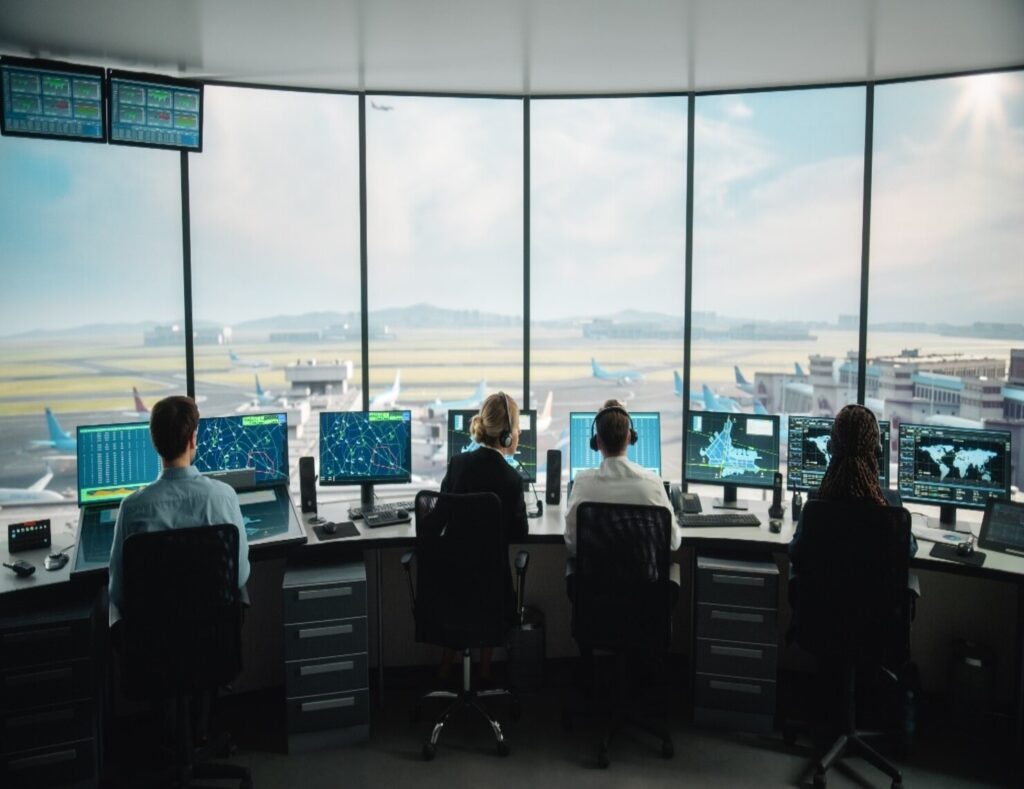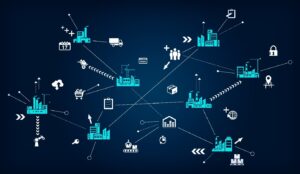The concept of the supply chain control tower has become very popular. But what exactly does it mean? Magic keywords abound in this field: Digitalization, advanced analytics, end-to-end, big data, collaborative, real-time, etc. All this sounds attractive, but what is the reality behind the gimmicks? What is a supply chain control tower and what does it do? In what industries is the concept relevant? Is it complicated to implement? How much does it cost? What is the return on investment?
From Transport Tracking to End-to-End Visibility
The first supply chain control towers originated in the logistics departments of multinational companies. Their objective was to trace the inter-site flow of goods — often at the junction between different ERP systems — and maintain continuous visibility of containers, trucks, and batches in transit.
Subsequently, these systems were refined to go from tracking transport batches to tracking their contents: Orders, SKUs, and quantities. Gradually, they began to facilitate not just visualization but also decision-making.
Aggregating Disparate Data
The life of a company is often made up of successive acquisitions, resulting in the coexistence of multiple ERP systems. For decades, the ERP industry has held out the promise of a single information system that brings together all the company’s sites and functions in a single global instance. But that’s not the reality for most companies.
The democratization of cloud technologies has led to the advent of new approaches: a platform is set up to which all the company’s heterogeneous systems are connected, via web services, for example: ERP systems, but also possibly TMS, WMS, or MES, depending on what data deserves to be collected.
This allows companies to unite, on a common and collaborative platform, the visibility of all their flows, in a quasi-real time mode — from daily updates that facilitate the management of inventories and flows to minute-by-minute updates that connect workshops or distribution centers on fast-moving, short lead time flows.
This type of approach is often referred to under the catch-all term “supply chain digitalization.”
From Business Intelligence to Action
Aggregating disparate data into dashboards is nothing new. That’s what our business intelligence systems are for — Tableau, QlikView, Power BI, SAP Analytics Cloud, and the like are all well-known and have spread to most companies. So, is this what a supply chain control tower is about?
Even if Business Intelligence technologies are feeding control towers, they are only one of the building blocks.
Every modern business is drowning in data. Data is constantly being collected, maintained, and edited. Much of this data is of uncertain quality. Business intelligence allows us to aggregate and visualize this data in the form of dashboards.
But how many companies get bogged down in their dashboards and KPIs without translating this data into relevant information that will enable action? How many of these dashboards are based on a history that is no longer relevant anyway? What about this in your company?
Taking Action with a Supply Chain Control Tower
The supply chain control tower, by contrast, is designed to facilitate daily action. To do this, it translates data into information that leads to action: To trigger a purchase order, a transfer order, or a manufacturing order, for example. To accelerate a flow according to business priorities, or to ship by air rather than by sea, or to start this product on the production line rather than that one.
The goal is to make these decisions on a daily basis, according to the actual demand to which we are exposed, and with a systemic view. That means decisions that were previously made in an ERP system, often at the level of one of the supply chain sites (with its myopic view of the upstream and downstream supply chain), are transferred to this control tower.
During our user conference in France in May 2022, one of our customers, a multinational company, gave an illustration of this. For the past ten years, this company has implemented an “inventory segmentation” approach, based on an end-of-month analysis of the evolution of the health of the inventory on all sites. Out-of-stocks, surpluses, inventory turn — all were based on red / yellow / green / blue color codes and visualization via BI. This allowed them to make progress, but at the cost of mobilizing a lot of resources, and with a frustrating delay. For a site supply chain manager, explaining after the fact to management why stock, lead times, or service have drifted is not the most gratifying exercise.
Since they switched to the Intuiflow control tower, day-to-day decisions have aligned with “stock segmentation” and real priorities — which allows them to be both more efficient and to obtain sharply improved results. No more bad excuses at the end of the month.
Automate the Routine, Work on the Exceptions
A prerequisite for an effective control tower is that it is based on a relevant supply chain model. Target stock sizes, lead times, demand rates, and risk assessments feed the design of this model.
In addition, the management rules are defined to automate the routine. There is no need to constantly ask existential questions about the entire portfolio. Our experience is that often around 90% of decisions can be automated if our operating model is well adjusted. The added value of the planners is to adjust the model and business rules — and to deal with the exceptions that really require a problem-solving approach and a reinforced collaboration of the supply chain actors.
Since the control tower is established based on a model, with defined parameters and management rules, it can be used for simulations: What would happen if this or that? It can thus be easily and continuously used to project into the future and feed the S&OP process.
Benefits of a Demand Driven Supply Chain Control Tower
Intuiflow clearly falls into the category of control towers: it aggregates heterogeneous systems on a collaborative cloud platform, provides end-to-end system visibility, facilitates automation and work by exception, and powers the modeling of flows and actual demand response.
Compared to other control tower technologies on the market, we think our approach differs in several ways:
- We believe that in order to respond to an increasingly complex market environment, we should not add complexity to complexity. We advocate the design of an operating model driven by real demand, allowing clear priorities. Our solutions are uncluttered, intuitive, to allow for immediate decision-making.
- We are convinced that forecasts are useful but that actual demand will differ, and that we must therefore equip ourselves with agility and resilience through buffers, steering by key control points, and making decisions as late as possible (but not too late).
- Our platform allows for the continuous development of an S&OP process focused on adapting to a changing environment.
- We link the decisions on the shop floor, at machine level, to end-to-end business priorities — in real time.
- Our platform is designed to meet the needs of both large enterprises and small and medium-sized businesses at an affordable cost, as control tower technology must be made available to every modern enterprise.












